If you’re shooting to meet FBI specifications for projectile penetration — 12″ to 18″ in 10% ballistic gelatin — you’ll find that the .32 ACP cartridge is a tough nut to crack. Ball ammo, whether round- or flat-nosed, cast lead or jacketed, overpenetrates and does little in the way of tissue damage while it’s getting there. Hollow points consistently fail to expand due to small bullet diameter and lower velocities and, therefore, act like a ball round. Oddly enough that’s actually the best case scenario, because if the hollow point does expand it then grossly underpenetrates.
Lehigh Defense, makers of 2015 TTAG Readers’ Choice for Best New Ammo, set out to solve this conundrum and to #Make32GreatAgain. Okay, okay, I made that hashtag up myself, but I think it precisely sums up their new .32 ACP Xtreme Cavitator bullet.
You see, this caliber used to be popular back in the day when dying of infection a month after being shot was a likely outcome. It fell off the charts when it was no longer capable of meeting modern self-defense requirements — rapid, threat-stopping incapacitation — and was dead and buried when modern production methods and materials allowed for tiny pistols chambered in much more effective calibers.
But what if you could engineer a projectile that meets modern standards? One that brings .32 ACP back from the dead and into the realm of legitimate self-defense choices? A bullet that delivers on a #Make32GreatAgain campaign (if there were one)?
If you haven’t guessed by now, Lehigh believes they’ve accomplished that with the .32 caliber Xtreme Cavitator projectile, and Underwood Ammo has taken to loading it into really nice, nickel plated .32 ACP cases with flash-suppressed powder. It’s available in standard and “+P” loads, traveling 1,000 and 1,100 fps respectively. Underwood claims penetration in FBI-spec ballistic gelatin is 14″ and 14.75″, respectively.
This was a claim I definitely wanted to put to the test, and Jon Patton of The Gun Collective helped me score two blocks of calibrated, FBI-spec pork jell-o…which I blew up with a .50 BMG. But before turning it into chunky rain, there was some science.
Shot through two layers of t-shirt to simulate “light clothing,” a round of standard pressure .32 ACP Xtreme Cavitator stopped right at 14″. It made a fairly decent wound cavity, too, and traveled dead straight.
Upon reviewing the slow-mo footage later — this is all from the video at top, by the way — the temporary stretch cavity wasn’t too shabby at all.
With four rounds in the block, a clear trend is shown. Bullets are straddling the 14″ mark with extremely (Xtremely?) high precision. Looks like Underwood’s penetration claims are spot-on. FBI spec has been met.
As a control, I also ran two FMJ rounds and two Speer Gold Dots through the gel.
Color me surprised and impressed that both Gold Dots expanded fully and flawlessly. Of course, that came at the cost of penetrating only 8.25″ and 8.75″ of gel, which is well short of spec. I was also surprised to see smaller diameter permanent wound cavities than those made by the Xtreme Cavitators.
The FMJs overpenetrated, although by less than I anticipated. Actually, they only overpenetrated on average, with one stopping right at the 18″ maximum allowable distance and the other edging close to 19.75″. Permanent wound cavity barely existed, looking like a thin white line smaller than bullet diameter tracing its path through the gel.
At this point, I’m fully willing to say that the .32 ACP Xtreme Cavitator round is a legitimate self-defense option on paper. It penetrates to spec — consistently — and is “barrier blind” due to being a solid projectile that doesn’t rely on expansion or otherwise deforming. As expected, except for the rifling grooves, all four of them looked just like they did when brand new.
However, performing properly in FBI-spec gelatin is secondary to proper function. If it isn’t reliable in general or isn’t reliable in a specific firearm, it isn’t a valid self-defense choice. I spent a couple hours scouring the interwebs and found nothing but positive feedback from Beretta, North American Arms, Walther, Kel-Tec, and other pocket pistol owners saying the round has been running reliably and accurately for them and is a low-recoiling pleasure to shoot. I also found it accurate and extremely soft shooting, but it did suffer stoppages in my loaner Beretta Tomcat.
In the first 30 rounds fired, I had three failures to feed. Two of them were jams with the nose of the round pointing much too high and stopping solidly against the roof of the chamber, just barely into it with the base of the round half on the breech face and half still on the magazine. One was a feed failure I can’t say I’ve ever experienced before, in which the round fed so high that it actually cleared the top of the chamber entirely, launching down range well in front of me, slide closing on an empty chamber. I managed to capture that in slow-mo, in fact, as the round flew past the camera’s view following the previous shot:
If I hadn’t caught that on camera I’m not sure I would have known what happened. I was confused to get a “click” and then find the chamber empty, rounds still in the magazine, and hadn’t actually seen the round fly downrange or just thought it was the ejecting brass from the previous shot. It was much later, when cleaning up the range, that I found the loaded round sitting on the ground. Some conspiracy theories crossed my mind, but I quickly dismissed it as being dropped or rolling off the table, etc.
After 40 rounds of Lehigh were shot up, I finished off the box of 20 Gold Dots and went through the rest of 50 FMJs. No stoppages. Both of these rounds had more muzzle flip and felt recoil than the 50 grain Lehigh/Underwood fodder, but either way .32 ACP through a Tomcat is a pussycat that’s easy to shoot and to keep on target.
Yesterday I fired 40 more of these Lehigh/Underwood rounds, hoping that my earlier stoppages were due to a brand new gun needing a bit of a break-in. Unfortunately, that didn’t pan out and I had two more failures to feed. Same thing; nose of the bullet jammed into the top of the chamber. I can’t account for the rotation of the bullet — one of the flat sides down or one of the edges down — although I wish I had paid attention to that while loading the mags in case it mattered.
I’m thinking not, though, as all of the FTFeeds except for the crazy launching-out-of-the-gun one happened on the last round in the magazine. That ain’t a coincidence. As other Tomcat owners have reported flawless function, I can’t really drill this down. Maybe the problem is with the single magazine I have for the gun — although the other ammo seemed to work fine. Maybe a different mag would resolve this. Maybe it’s the rotation of the bullet in the magazine. Maybe it’s the groove around the ogive. Or maybe it’s something else.
It is accurate. Sights on the Tomcat are minimal, and I think groups like this are about all I’m capable of at seven yards no matter how straight the bullets fly. Actually, I’m quite pleased here. The red bullseye, by the way, is 3/4″ in diameter.
Conclusions
If it runs in your gun, which apparently is the norm, the Lehigh/Underood .32 ACP Xtreme Cavitator is a legitimate self-defense choice. It passes FBI spec (at least for bare gel/light clothing, and I’m willing to assume heavy clothing as well due to the solid design leaving no chance for clogging), shoots accurately, and is xtremely light in recoil, blast, and flash.
The next step to truly #Make32GreatAgain falls to the firearm manufacturers. I’d love to see these rounds — which are shorter and narrower than 9mm or .380 — slammed into a high capacity, lightweight, sub-compact pistol (that runs them reliably) or chambered in a teeny little 6-shot revolver. Yes, .32 ACP is semi-rimmed, but there are ways to double stack them effectively. There are other great cartridges in which to load these .32 caliber Xtreme Cavitator projectiles, too, such as .327 Federal Magnum and .32 NAA. (BTW, .32 ACP works in a .327 FedMag revolver)
Specifications: Lehigh Defense .32 Caliber Xtreme Cavitator loaded by Underwood Ammo
Bullet Weight: 50 grains
Bullet Composition: Solid copper
Bullet Diameter: 0.311″
Bullet Length: 0.412″
Bullet MSRP: $28 for 50 projectiles
Loaded Cartridge Caliber: .32 ACP
Loaded Cartridge Velocity: 1,000 FPS standard pressure, 1,100 FPS “+P” pressure
Loaded Cartridge Muzzle Energy: 111 ft-lbs standard pressure, 134 ft-lbs “+P” pressure
Case Type: Ducta-Bright 7a Nickel Brass
Penetration Depth as Tested: 14″ (standard pressure)
Loaded Cartridge MSRP: $25.50 for 20 rounds
Ratings (out of five stars):
Self-Defense Viability * * * * *
Rated against other .32 ACP options, I believe this to be best of breed.
Accuracy * * * *
I’m limiting it to four stars as I have a very small basis for comparison. It shoots as accurately as the standard build and weight FMJ ammo I have, though, and more accurately than I would have expected from such a tiny gun. It also scores very high on practical accuracy with its low felt recoil, minimal muzzle flip, and general lack of flash. I was able to put rounds right on target at a fairly high rate of fire, which is usually a difficult feat from a mouse gun.
Reliability * *
I implicitly trust Underwood’s loading. They’re about as consistent and as high-quality as it gets, and this ammo is no exception. However, it’s possible that aspects of this bullet shape cause problems in my Beretta Tomcat. Although I’ve now seen dozens of positive reviews of this ammo running reliably through other .32 ACP mouse guns, including other Tomcats, I obviously experienced issues with my own that would have to be resolved before I could consider carrying this round.
Overall * * * *
Face it, .32 ACP still isn’t the best self-defense caliber out there, but then again no handgun round is. A surprising (at least to me) number of people still choose to carry .32 for its light, controllable recoil, and I believe now there’s finally a round on the market that can justify it as a proper choice for self-defense. If your gun feeds it. Don’t beat me up on the rating here; it’s a no-go for my Tomcat but if you carry a .32 ACP or want to, this round is promising enough to find out if it runs for you like it seems to for everyone but me.

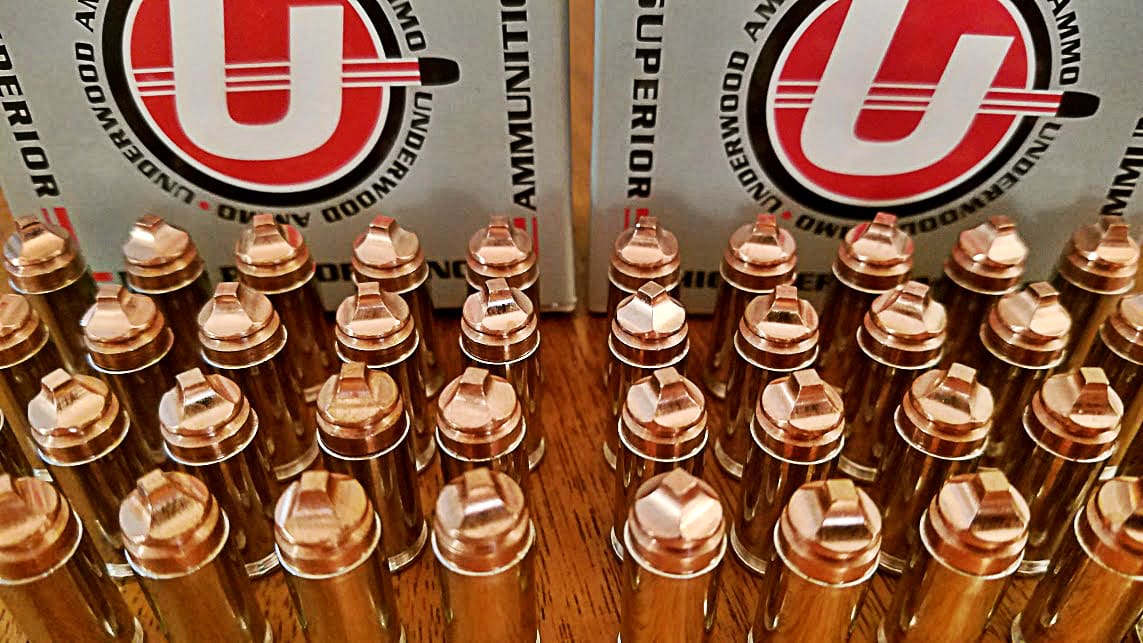
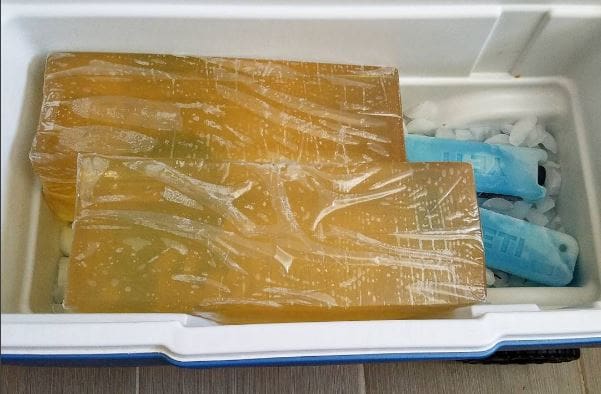
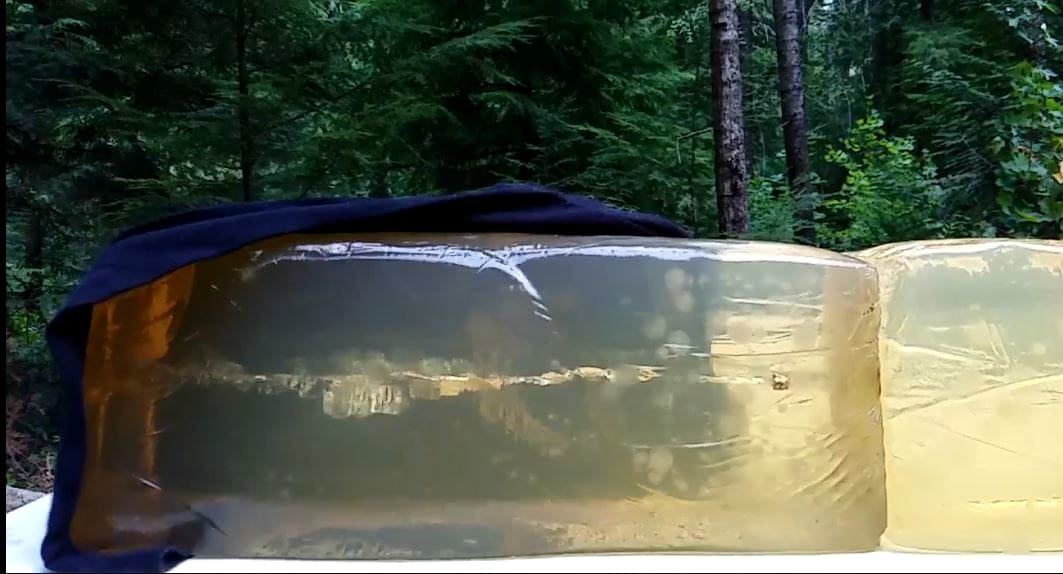
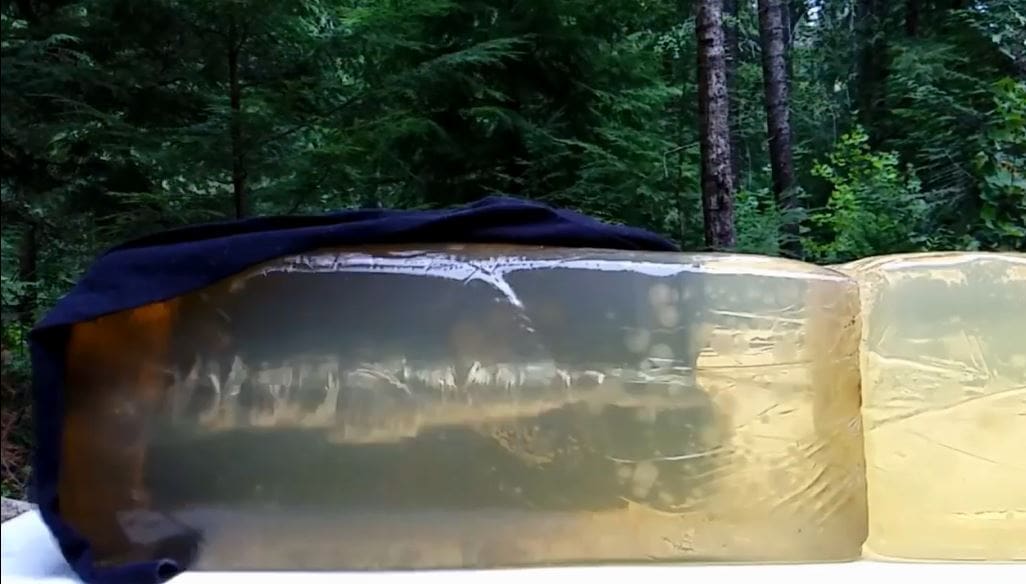
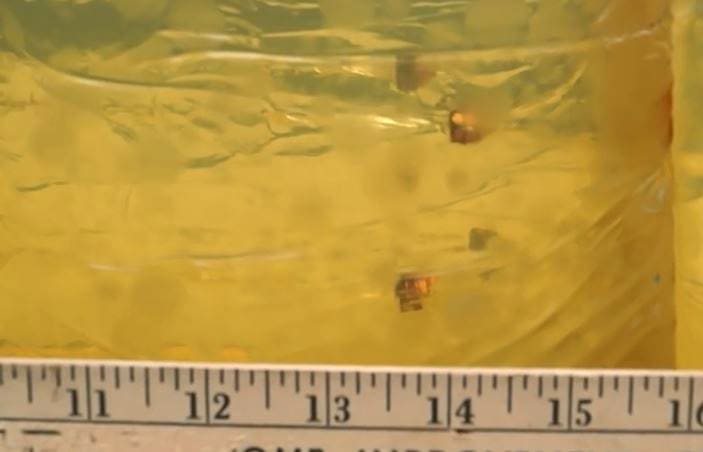


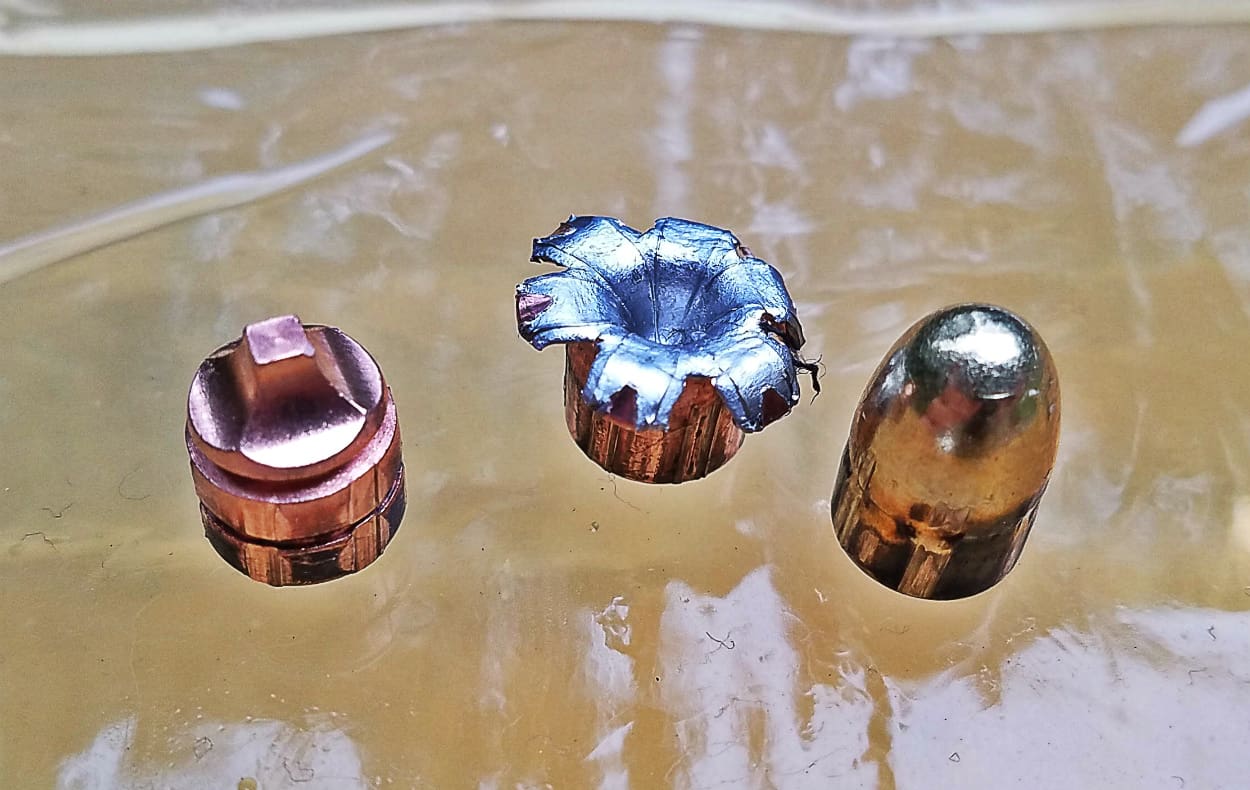
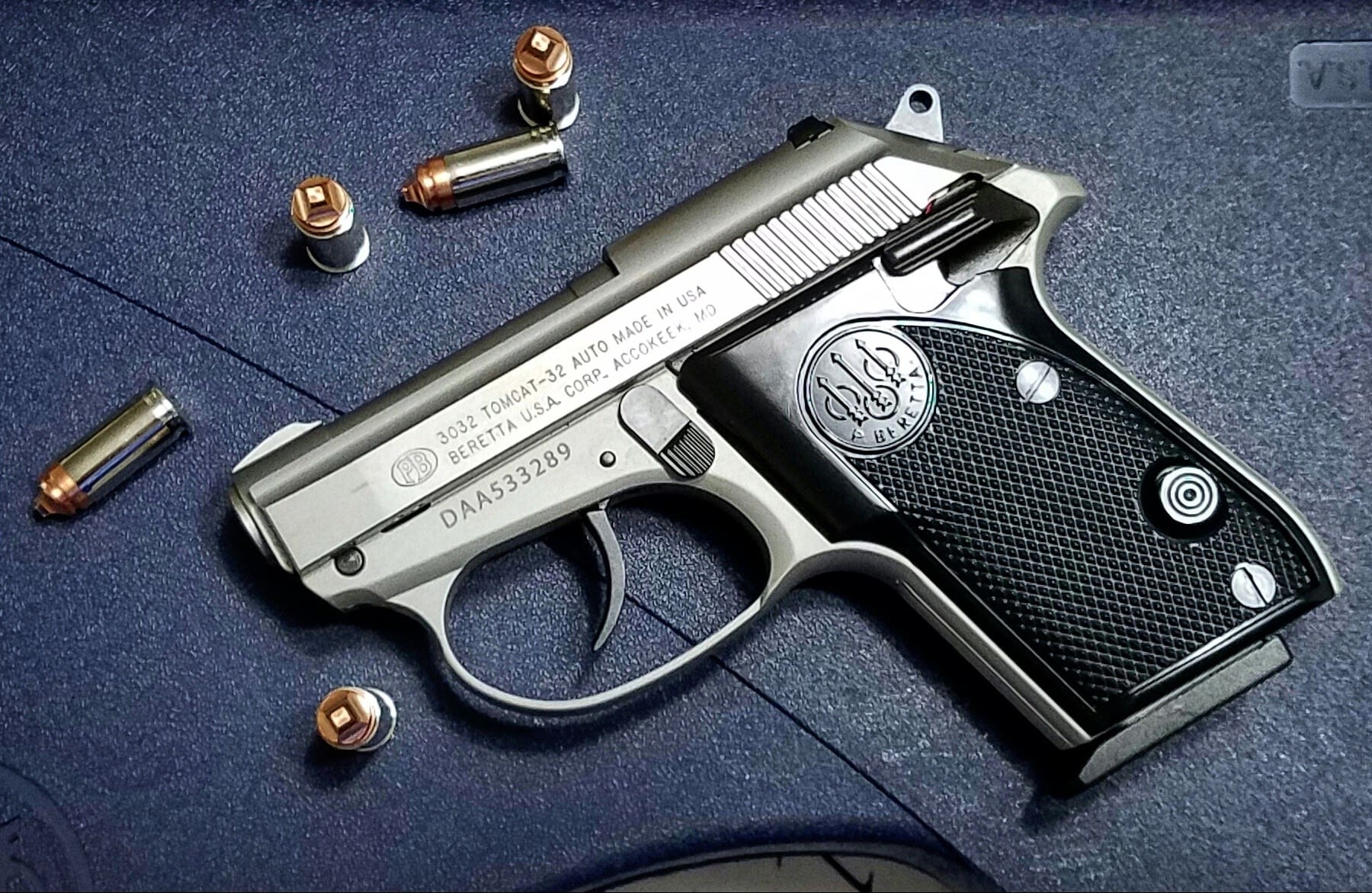
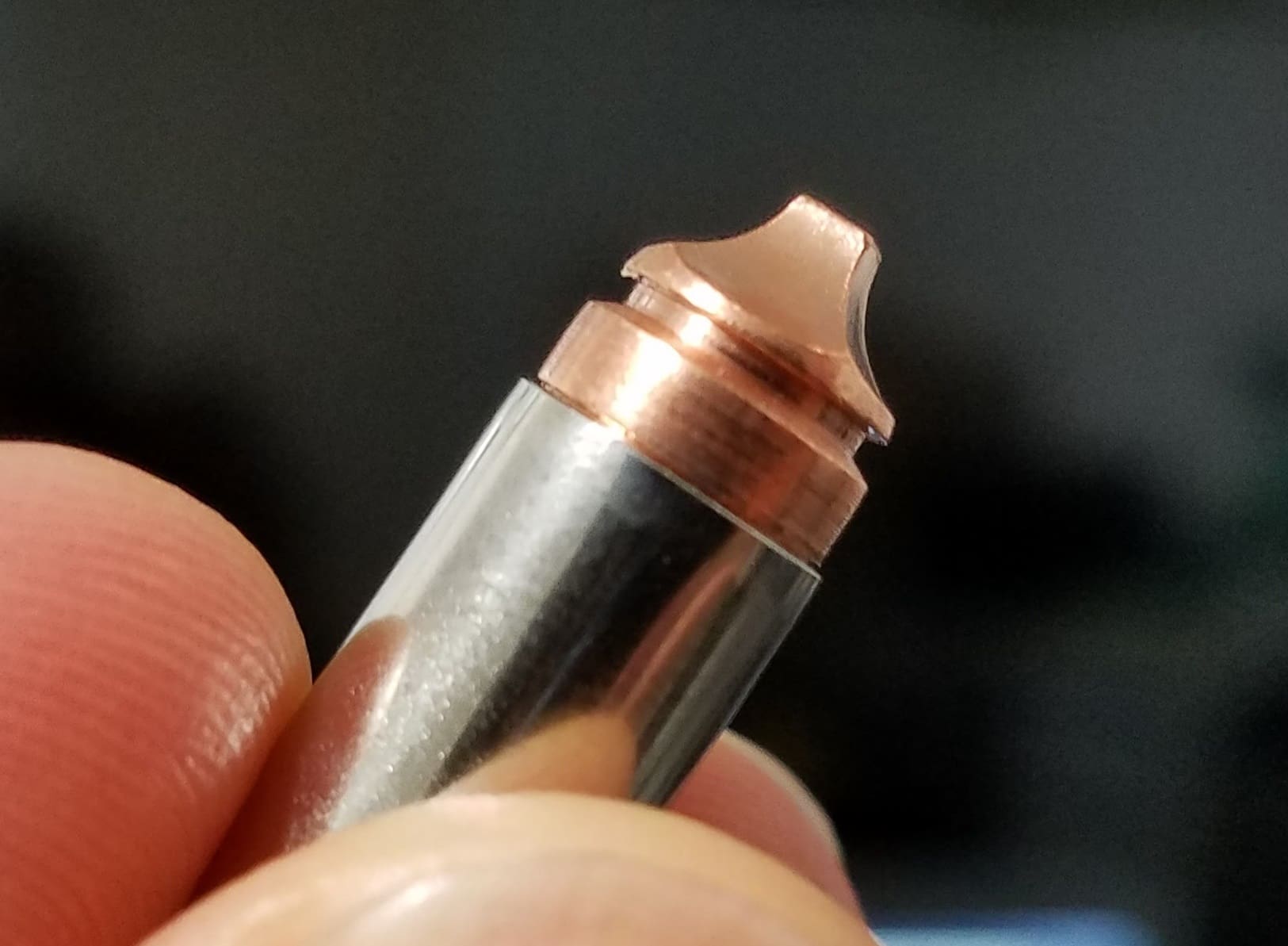





.32ACP and .380 are the same length. That said you do gain capacity over a .380/9mm with .32 if in the right gun. My Savage 1907 is double stack in .32 so it can be done and has been done. You get an extra round in a Kel-Tec and likely a more controllable round as a bonus.
The obvious next step is for someone to create a new .32 round by increasing the length of the round from 17 mm to 19 mm. Call it “7.65×19 Parabellum.” That would make for a more useful round in the same diameter without loss of magazine capacity.
Somebody do this, please!
What type of round is already exist, it calls 7.65×21mm Mannlicher, and it’s cool 🙂
.32 ACP as a base for new round is a kinda bad idea, because of semi rimmed case(8.6mm base diametr and 9.1 rim diametr).
I own a Tomcat and that is why I own a 32. I sold my S&W bodyguard .380 which was much lighter and more potent. This is not an EDC handgun. My EDC happens to be the Sig P938 and will replace it when the make a SA/DA 9mm in that size, although the CZ Rami is very close, but a little thick.
I’ll have to put some of these through my suppressed Vz 61 SBR…
…for science.
That wasn’t a malfunction. That round was so eager to get at that mofo that it jumped out of the gun and threw itself downrange. Play that video back and you’d likely hear a small growl as it charged.
On a serious note. I’ve owned any number of .25 acp, .32 acp and .380 acp firearms. I can’t honestly think of anything they do better than my j frame.
My P3AT is easier to conceal than my J-frame. I pocket carry both.
That said, I carry the 642 about 97% of the time, and the P3AT only about 3% of the time. I totally prefer the J-frame to the micro .380. Still, there is that occasional situation where the P3AT comes in handy.
Makes sense. My experience with .32s was mostly in larger sized guns. The Beretta Tomcat was not larger, although it was blocky and had the worst trigger ever. But i also had a 1903 Colt and a West German police surplus PP. The Colt and Walther, excellent guns, were larger than todays standards call for.
If I was to start over today the .32s would be range toys. A lot of guns easy to pocket carry in 9mm nowadays.
My Seecamp in .32 conceals FAR better than a J-frame. I carry mine daily in a holster in my front pocket. I do this daily, in everything from shorts in summer, to jeans, and even with a suit.
I want to see them make .25acp not suck, if not be actually great. Sure would be nice to tote my Beretta 950 in my shorts without feeling that I should reach for my knife instead…
.25 acp was supposed to suck. It was always intended for tiny vest pocket pistols/muff gun, and their function is to soften the target up before you engage in fist to cuffs with them.
BUT, it would be interesting to see this lost little screwdriver bit stuffed down a .25 acp and see what the results are. for science.
Do you hear that sound?
That’s the sound of Seecamp owners cheering wildly.
Interesting, this round looks injection molded, while the other Leighigh projectiles are CNC machined.
I predict they will soon be nicknamed ‘Square Drive’ ammo…
Actually I am wondering if this ammo is designed for the shorter OAL of a SeeCamp and that’s part of his issue.
Exactly what I was thinking. The Seecamp .32 is my EDC but it won’t feed ball ammo as the cartridges are too long. I’m wondering if this stuff would work. I run corbons, gold dots, and xps with out issue but I’m always looking for something better.
Underwood 32acp works best wit the kel-tec I believe it was their test gun.
Yes, underwood makes a similar copper round that intuitively would seem to be less prone to jamming. It seems this design does finally make the 32 potent enough for self defense
It’s machined from solid copper like their others.
I did see like 6 or 7 reviews from Seecamp owners stating that it functioned great in their guns.
OK, the top groove looks machined, the bottom one, maybe.
But look at the tip of that round, there’s zero tool marks, and you can see a faint ‘orange peel’ on the surface. There are zero sharp edges on the tip.
To me, it smells like it was molded and than ‘dressed’ by CNC on the grooves.
We’ve got folks with metal manufacturing and machinists experience here, if I’m full of it, chime in…
The corners/edges are all nice and rounded, plus there’s the “orange peel” you mention on the surfaces. I’d guess they tumble them in media after machining them to deburr/smooth and such, but the media is too large to fit in the grooves, which is why the tool marks are still visible in them.
To borrow the words of a real hero to most of us reading this blog: “What difference, at this point, does it make?” …no seriously though, would it matter in any way if it’s a cast piece of copper vs machined from copper wire or something?
All said and done, no real difference.
Looking at their website, yeah, they look tumbled.
Seeing the pic got me wondering how that tech could translate to other applications.
Just how my warped brain considers things…
Nifty. I like the crazy stuff LeHigh is trying.
I haven’t yet found a round my NAA .32 ACP will feed reliably, but these now are a permanent fixture it it when carried.
ball ammo has been good for me starting in 1972 in army basic training. flash forward and i happily load my excellent all steel ccw naa guardian 32acp with fmj ammo. i get consistent palm sized groups at 15′, no failures, no gimmicks for me.
I’m curious about what FMJ you used? In particular were you using something foreign made like Fiochi or S&B? They tend to be loaded much hotter than domestic 32ACP.
It’s 73 grain at like 980 fps. Which, yeah, considering the 50 grain Underwoods are doing 1,000 fps, we are talking about a not insignificantly hotter load here. I could definitely feel that while shooting. Interesting how much less damage it did to the gel. It also makes me wonder why Underwood isn’t pushing these 50 grain pills to higher velocities to get into the energy levels that some of these heavier, yet effectively same-velocity loads seem to make. Maybe some of the domestic mouse guns aren’t really made for that? The Gold Dots, btw, are 60 grains and claim to do 960 fps.
Sorry for the lack of clarity on this. .32 ACP isn’t particularly familiar to me as I just never found any appeal in it. If it were dirt cheap, sure, I’d have guns in it for plinking use, but 9mm and other calibers can be had for less. Knew basically that it was .32 caliber and semi-rimmed and good for a vest pocket while playing poker 😉 but not much more.
Thanks. Sounds like Fiochi. The Remington or Winchester loads may have a surprisingly good showing with not over-penetrating.
And what I’ve heard claimed is that domestic ammo is underloaded due to fear of poorly made Saturday night specials, but who knows whether that’s actually the case or not. (or maybe it’s for penetration performance?, who knows)
And you’ll get no objections from me on it being a rather anemic round with being semi-rimmed as a serious problem (why couldn’t 35 S&W have caught on instead!?), but it has its place for deep concealment. My Kel-Tec P32 can go with me places that not even a G43 or XDS can.
You know, I was thinking about this some months ago and decided that if I were to invent/design a new caliber, I’d be looking to make basically the skinniest centerfire round out there but make sure it can put out some velocity and ideally a decently-heavy projectile. Something like taking .25 ACP, making it rimless, stretching it out to 5.7×28 case length (which is long), and then necking it down slightly to hold a .224 projectile (obviously this would require different brass than .25 ACP, but physically this is where I’m at in my head). Or not necking it down and running .25 cal projectiles. I dunno… haven’t actually put any thought into it haha. Just figured small diameter case, but long, for crazy capacity in a pistol with a short grip (no printing) while retaining the ability to get a projectile really cooking along.
In the rifle world, it would just be the heaviest projectile capable of being shot through an AR-10 platform, designed to be just barely subsonic. For suppressed hunting, really. This caliber might actually be the .510 BECK (see the last few paragraphs of this article)
Jeremy, I kept waiting for the laugh line! Aren’t you talking about the .327 Magnum? Which seems to have already been invented?
Make that rimless, a good millimeter narrower in case diameter, and stretch it slightly longer still (OAL of 5.7×28 is longer than that of .327 FM) and you’re there. Really, maybe it’s just the 5.7×28 that I’m thinking of in the first place haha. It’s 0.7mm narrower in case diameter (not counting rim) than the .327 FM and it’s longer. But the .327 offers double the energy level. So there’s something left on the table here for an auto-loader. Maybe you’re right and that would be the ideal starting point — .327 FM, machine the rim off, roll/crimp an extractor groove into it, go from there. Leave it .32 or neck it down to .224 and create something nuts.
This is all just silly talk, of course 😛
Interesting. I did see a Keltec 32 for sale at a local gun shop the other day-wanted $330 for it (!).
Sounds like they’ve been smoking crack. The Keltec 32 is a perfectly acceptable $200 gun. $330 is about what I paid for a Glock 22, a Security Six, and a Colt 1917 (each – not for all three). My P3AT was $200.
Wow that is too much, last year paid $350 for a Seecamp in very nice condition what was on consignment at LGS and its build quality is 100x a Keltec.
What is the OAL?
0.936″ or 23.78 mm
Bummer!
Too long for a Seecamp
Really? I saw a good half dozen Seecamp owners report that this stuff worked well for them. I think there’s one or two Seecamp reviews on the Underwood product pages too.
I tried the Lehigh ammo in my older (1993) Seecamp last week. While it fits FINE in my magazines (1 old, 2 new), and did shoot SOME of the time, it required 2 strikes almost 1/2 of the time. I also was annoyed with the large number of FTFs, and just about every other type of failure one can think of … including a round firing fine and then having the empty cartridge getting jammed hard into the magazine along with the next feeding cartridge. (This was an odd first for me in this or any other gun.) I originally planned to give up on it, but I started thinking that I never tested this new ammo until after I had already shot perhaps 60 rounds (Silvertips, Gold Dots, Hornady) that night… so perhaps it was also impacted by the gun being a bit dirty? I think I need to try it once again in a spotless gun — perhaps as a single round, then as the first round in the magazine, and then as a full magazine before I give up on it.
I am also thinking that I might try the stronger-shooting standard and +P Underwood options also, as perhaps the FTF issues might have been related to timing issues?
.32ACP LCP when?
I want you to hand load some .327 Fed Mag at say 2500 fps,shoot it from the 4.2 inch SP101, and get back to us with the results. Please…,
John Davies
Spokane WA
Looks like a reinvention of the THV round
The THV is absurdly hollowed and has a much smaller point quite on purpose. It’s also banned from new civil manufacture/sale in the USA.
I’ll bite. WTF is a THV round?
http://www.quarryhs.co.uk/THV.htm
Awesome link! And for sure; very similar 🙂
“Hollow points consistently fail to expand due to small bullet diameter and lower velocities”
I’ve had good luck with the XTP design, but even still, penetration seems to hover between 11-12″. I’m glad to have another choice to try, finally.
http://www.thetruthaboutguns.com/2016/08/jeremy-s/ammo-review-lehigh-underwood-make-32-acp-great/
Article inception
For what it’s worth, in the previous review of Lehigh ammo here on TTAG, a commenter claimed that they tried to reproduce those impressive terminal ballistics in actual meat, and was unable to – said that they worked same as any regular FMJ, with no extended wound channel.
https://www.thetruthaboutguns.com/2016/03/daniel-zimmerman/new-lehigh-defense-45-acp-xtreme-defense-bullets-underwood-ammunition/#comment-2562593
Now, this is just one guy making a claim with no evidence. However, I did send a link to that comment to Lehigh, and asked them to respond to it (obviously, if this is false, it should be fairly easy to demonstrate, by recording a video with a chunk of meat being shot and then opened up to showcase the channel).
To the best of my knowledge, they never responded to those claims – at least not on TTAG. So, while they remain unverified, it’s worth keeping them in mind. And it would be great if you guys could run such a test and settle the matter.
Note also that this was regarding a different bullet design (Xtreme Defense). Based on Lehigh claims, Xtreme Cavitator uses somewhat different mechanism to expand the channel, so test results for one might not apply to other. In any case, since Cavitator is the newest and greatest thing, I think testing that would be of most practical use.
Unless that meat chunk was attached to a living animal, you won’t get accurate terminal ballistics data. These bullets cause the extreme wound cavity by using fluid pressure. The screwdriver design of the bullet cause the fluid in the body to spin around the bullet at great speed to create a larger wound channel than the diameter of the bullet itself similar to a pressure washer. The problem with meat chunks is the fact that it is dead tissue with a lot less fluid in it, and the fact that living tissue reacts VERY different than dead. Shootingthebull410 said this as why he does not do test with meat as it is not a reliable method to obtain ballistic data.
Indeed. Dead tissue — meat, skin, bone, etc — does not replicate live tissue. That and destroying muscle tissue, specifically, isn’t actually the goal in a self defense situation (or in hunting).
That may well be the case, but it’s also true that ballistic gelatin doesn’t replicate living tissue entirely accurately, either. So it’s a disparity that may be worth investigating.
With respect to “destroying muscle tissue, specifically, isn’t actually the goal in a self defense situation”, I have to disagree. The goal is to incapacitate as quickly as possible, which generally translates to creating a wound channel that is as wide as possible (or, alternatively, fragmenting and creating multiple small wound channels with different trajectories) – the idea being that the wider the channel is, the more chance of it hitting some vital organ; and even if not, larger inner area of the channel will produce more bleeding, and therefore faster incapacitation via blood loss.
And how do you create a wound channel? Why, by destroying tissue that happens to be where you’re shooting. The more tissue, the wider the channel. Depending on the angle, that may well include a lot of muscle tissue.
Hunting is slightly different, because you don’t want to destroy too much, either, since you intend to consume the meat. Hence the preference for soft points over hollow points, and disdain for fragmenting bullets. But when it comes to self-defense, all that doesn’t matter.
I am a L/E and civilian firearms instructor. You are too forgiving–the ammo is not reliable for self-defense and is too expensive to shoot at the range. It’s reliability rating should have been 0 stars. The gold standard of ammo is the Gold Dot by Speer. I have tested it and ordered it for the 2nd largest agency in the US. I have used it on animals and seen autopsies on Bad Guys–it simply works very well. With the 9mm Pocket Pistols now being designed and made, there is no need for a 380 or 32 pistol. Remember, PENETRATION is more important than EXPANSION. The bullet has to penetrate into the vitals to cause death. Penetrating into the heart with zero expansion works wonders. RELIABILY comes before penetration. There is nothing wrong with FMJs in a 32 or even a 380. To reliability expand, most JHPs HAVE TO be going at least 1000 fps. Suggestion: Spend money on cheap FMJ and load the Gold Dots for self-defense if your pistol likes them. Take a training class that is stressful…shoot straight and fast. Do not use pre-fragmented bullet designs.
Not reliable in my gun doesn’t mean not reliable (and I’m assuming you know this, since you suggested Gold Dots “IF your pistol likes them”). These rounds aren’t more expensive than loaded Gold Dots, which grossly underperform in this caliber btw and fall short of the Federal HST in nearly every caliber. These Lehigh bullets don’t deform, expand, or fragment. I also reject the 1,000 fps necessary to expand suggestion, despite that being such a conveniently round number. There are dozens of 9mm JHPs that are well under that velocity, most .45s are way under that velocity, and there is a whole mess of engineered subsonic loads designed to expand at low velocities, all of which do it with utter reliability. I don’t really care what Hydra-Shok or other outdated stuff does though 😛 . The 147 grain loads I carry in my 9mm EDC don’t hit 1k FPS but they’ll do 15″ in gel and expand fully and flawlessly each and every last time. But a lot of folks have gone to a solid like the Lehigh ones that function without having to rely on changing shape at all. Which I like. But I’m probably a slow adopter when it comes to this stuff.
>> With the 9mm Pocket Pistols now being designed and made, there is no need for a 380 or 32 pistol.
The lightest 9mm pocket pistol on the market is still twice as heavy as the lightest .32 ACP pistol (that before you even start counting ammo – more like 3x with a full mag on either), and the latter is more compact as well. For pocket carry, every ounce matters – and not everyone can carry IWB comfortably, or wants to wear clothes that allow for such carry.
DOD or USPS? LOL!!!!
I do agree with you about 9mm vs 380/32acp. As a fellow L.E. and Civilian instructor, pocket pistols in these calibers really only have “carriability” in their favor. Certainly not “capability” or “reliability.
Make mine a J frame or 9mm nini thanks.
After having a bad experience with the Lehigh rounds, I tried both of the Underwood rounds in my Seecamp a few months ago. After FAR TOO MANY double and triple strikes, stove pipes, and FTEs, the net result was a cracked slide and busted firing pin on my .32 Seecamp after shooting the +P. Seecamp charged me a bit less than $200 to make me a new slide and replace the firing pin, but until Seecamp decides to actually TEST (and then recommend) these Underwood rounds or until Underwood can tell me WHY their round ruined a stainless stell weapon with less than 500 rounds on it, I will not be trying the Underwood .32 rounds again! Sadly, I have a .25 Seecamp on order, but I’m waiting until they respond to decide what to do next.
I tried these rounds in my Beretta Tomcat .32 acp today at the range. I got FTF’s about every 4th to 5th round. My Tomcat has reliably cycled Hornady XTP JHP, Speer Gold Dot JHP, and every single FMJ ball ammo I’ve ever run through it. I really wanted to like this round after seeing this video because of the impressive penetration results. However, based on it’s functionality in my handgun, I cannot recommend it.
Just shot a box (20 rnds) of the Underwood Xtreme Cavitator 50g +P out of my NIB Kel Tec P32, fed fine, no issues.
Even did a “mixed mag” with my range leftovers (Qty 2 Fiocchi FMJ, Qty 4 Xtreme Cavitators and Qty 1 S&B FMJ), fed fine, no issues there either. May buy a couple more boxes (expensive!) to continue testing reliability while continuing the “break in” process in with my standard euro FMJ rounds.
Is there not a problem with rim lock in the P32 with these cartridges? Thanks.
The semi-rimmed .32 ACP has always fed fine from semi-autos. After all, ACP stands for Automatic Colt Pistol and the caliber was designed specifically for use in semi-auto pistols.
Yeahhhh…hey, maybe it’s jes’ me, vato, but I say: if the round doesn’t feed, you may as well leave your gun at home.
I bough a box of lehigh 32acp and tried in my Walther pp. Failed to fire 5 tmes in a row. Put them in my Seecamp and fired about half the time on the first strike. They fired on the second strike. This is completely unacceptable for defensive purposes. Used Winchester flat nose fmj without a missfire. I don’t know what the problem is but I won’t be buying these again
I appreciated the articles on the Tomcat and Lehigh .32 acp Xtreme Cavitator.
I have had the black and SS 3032 for quite a few years and after reading the Lehigh .32 acp review, decided to load some for evaluation.
As a rule, I do not load or use any “+P” ammunition that does not have a SAAMI specification for it and do not use the ones that do have a +P SAAMI spec in guns not rated for it.
To date, I’ve only shot .32 acp FMJ white and green box, Gold Dot and 72 gr. LRN reloads I’ve made, in both pistols without problem but for testing I’ll start with the INOX Tomcat.
I have purchased 50, Xtreme Cavitator bullets to load. I plan to start with Lehigh’s reload specifications for the bullet, evaluate the small sample results and continue with a larger sample of those or create new samples adjusting for OAL, powder and powder load as well as primer manufacture if the testing warrants trying that.
After my testing, I’ll purchase 20 rounds of Lehigh’s cartridges to compare to my testing cartridges.
My testing plan comes from the two most excellent articles by JeremyS as well as many of the comments that follow them, which I also appreciate.
The little .32s are my “better than nothing” options that work well, given my age, and facilitate shot placement due to the easily managed recoil.
And like my Sig P238, I can reach in my pocket, put my hand on the black, Tomcat and even bring it close to being out by keeping my hand flat and just holding it with my thumb.
I also have a S&W Shield .380 EZ that will be put in rotation for IWB carry, after break in.
And yes, I have 50 of the Lehigh bullets to load and test in the EZ as well.
My priorities are reliability, shot placement then penetration.
Those Lehigh’s are an interesting bullet, but the shape is screaming out for a plastic “ballistic cap” to fix feeding issues. Mold the plastic over the front with a JHP profile and a hollow point to ensure that it fragments on impact and terminal ballistics should be the same and feeding greatly improved.
I was thinking before i read this, what about a plain ball ammo that will feed but the nose collapses inward to form a cup on impact. Maybe heating the metal when fired makes it malleable?
Actually, Federal makes such a round, but not for the .32. They call it the “EFMJ” for expanding full metal jacket. They use a thin jacket and put a ball of foam in the front and a lead core behind it. It’s for markets like New Jersey that ban JHP for defensive use.
Instead of an outdated pos like the Tomcat (I’ve owned a Pico and tried to love it). How did it do out of the Kel Tec p32? I don’t care what it costs, just want to know how it did out of it a decent firearm.
Truth.
I already wrote my fucking comment, what do you want?
Has anyone loaded this bullet into a 7.62×25 Tokorov, fired it from something like a TT, M57 or CZ52? I suspect >1600 fps could be expected from this light bullet.
I would just LOVE to see what that does to a block of jel.
So when are you going to check out Underwood’s Xtreme Defender 32acp and 32acp+P loads. I personally like the Defender bullet design more than the Cavitator because it is a little longer and has a more rounded nose, both of which should increase reliability. I carry the standard pressure Defender load in my Tomcat.
Yes, when someone will check penetration of the new Underwood xtreme defender. I always carried with this ammo ever since the Cavitator came out (standard pressure). Never ever had any problems with it running it w?seecamp 32. Since the new design came thats again, what I carryw/the seecamp. It is exactly the same design as the XD in other calibers (I use Underwood XD in almost all my guns for SD). But when eventually we/ll see some actual gel ( and gel +barriers) penetration tests done with the .32 acp XD from Underwood.?? Thanks
I will confirm this round is not compatible with the tomcat 3032. When I get a new ammo I dry cycle it first and the beretta would not chamber the ammo. Nearly every time. Never tried it on the range. The keltec p32 eats it and asks for more. I have a beretta 81 12+1 and it runs it like a champ. But in a mid size I would choose something else. The fact that an ultra mini like the keltec can consistently run this ammo is the only reason I buy it.